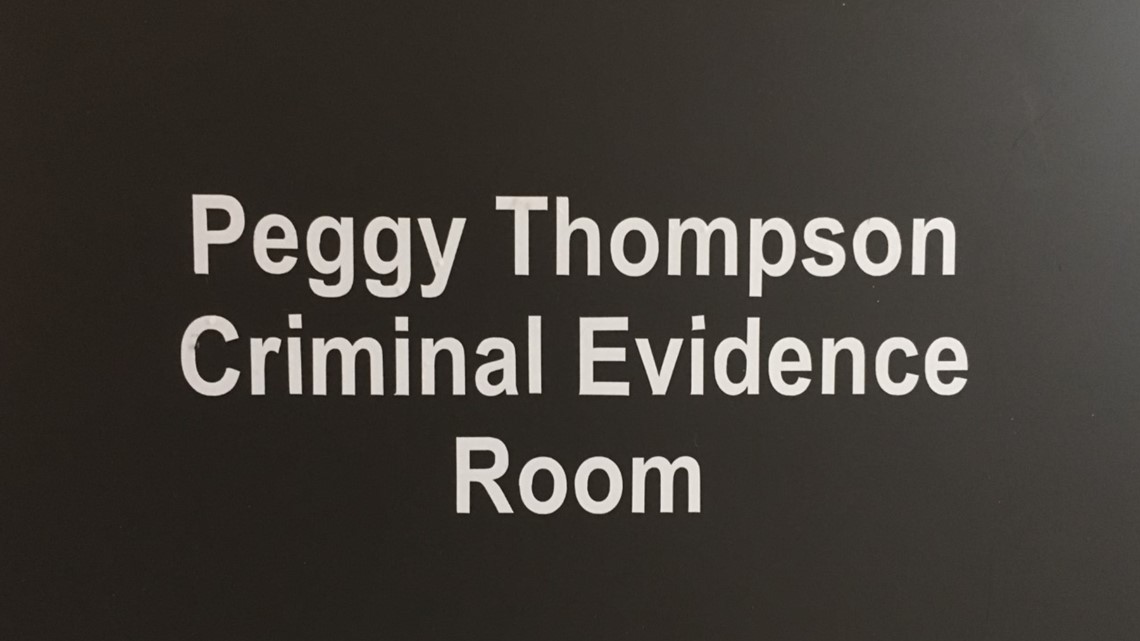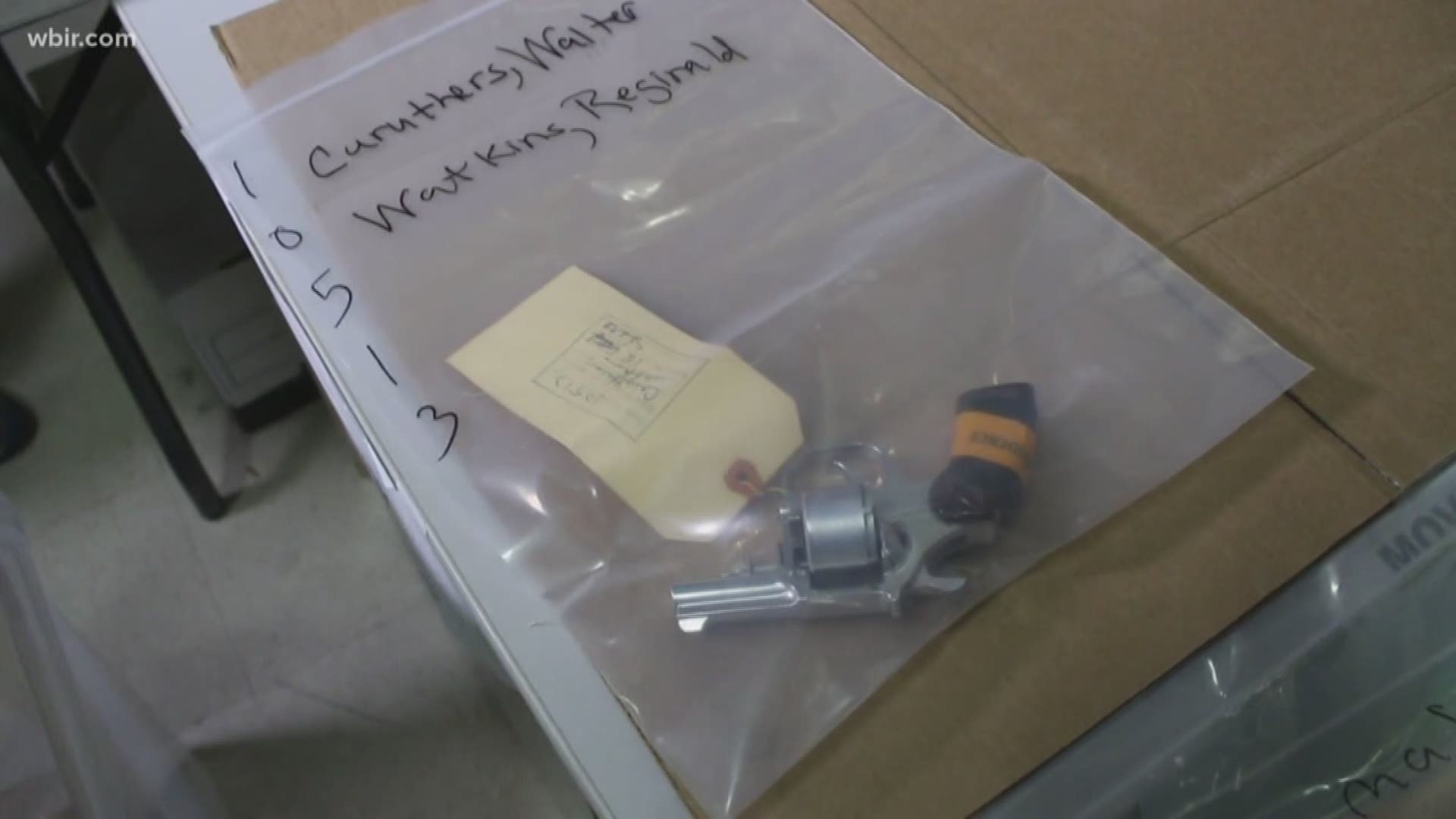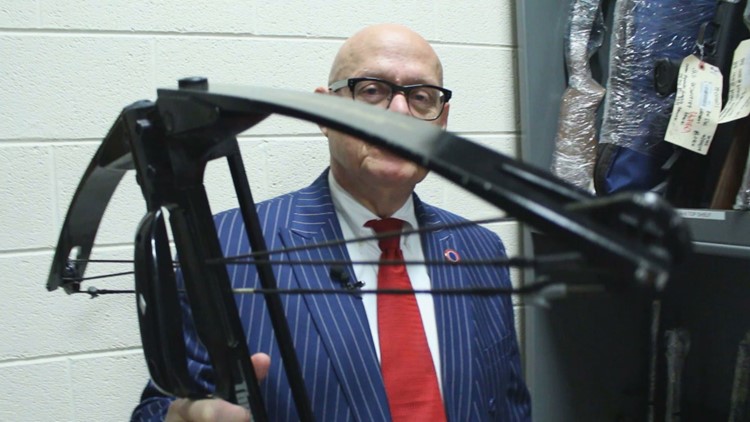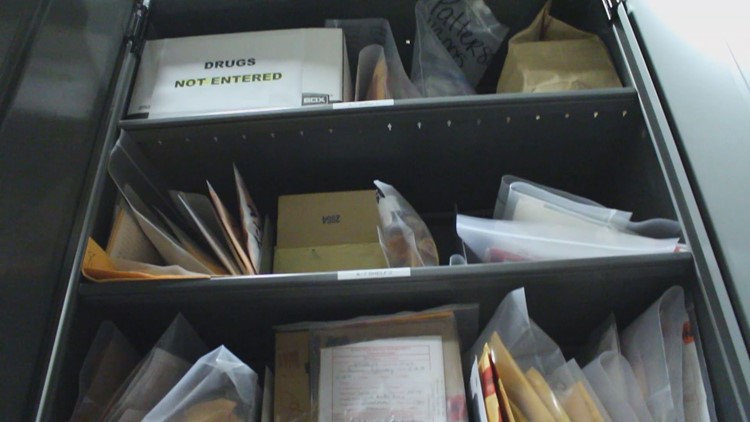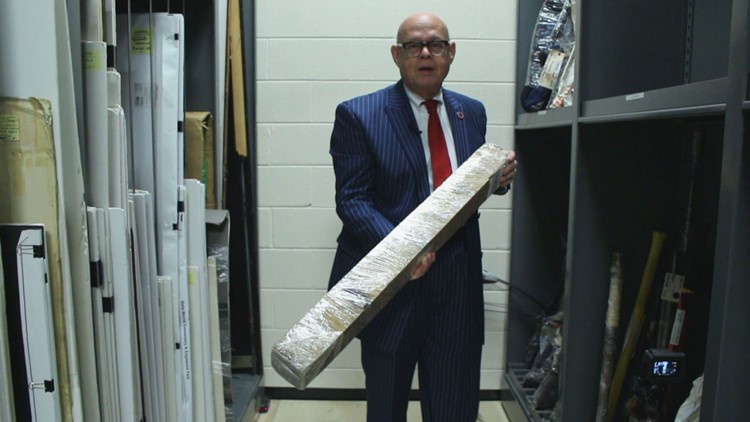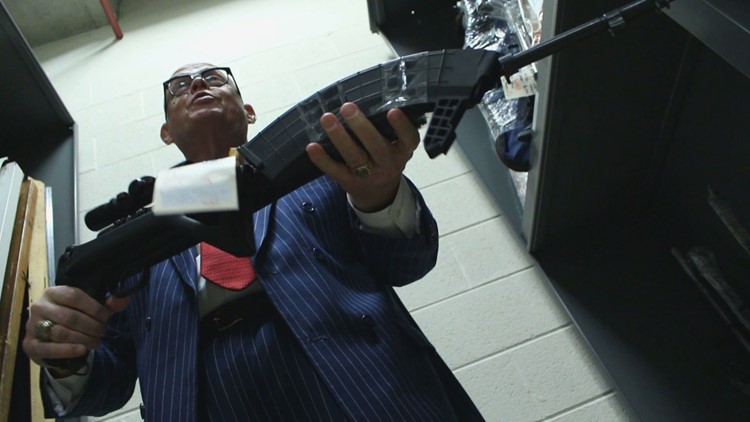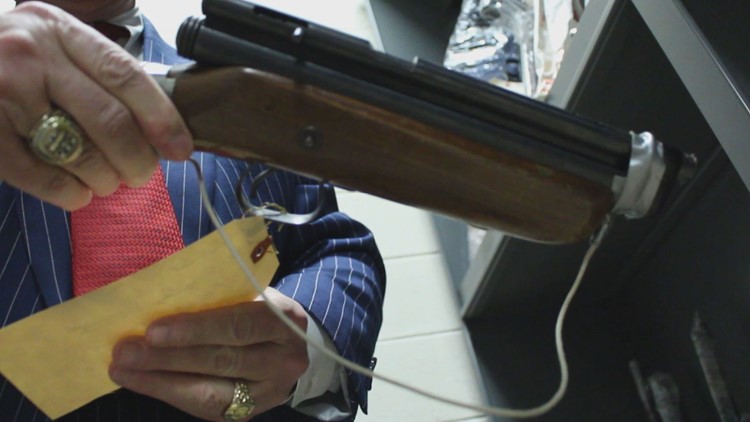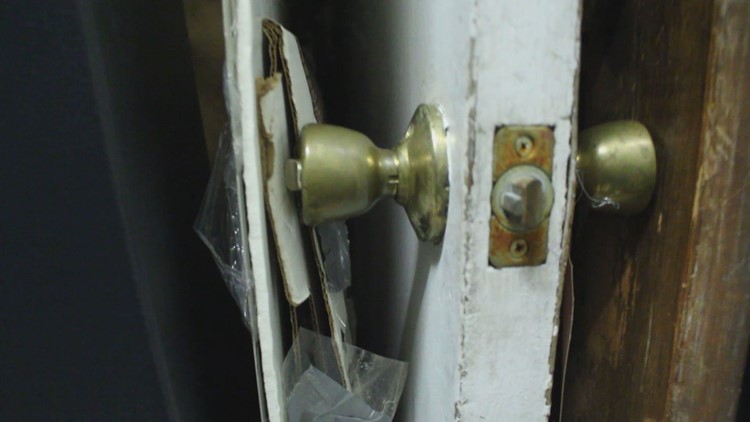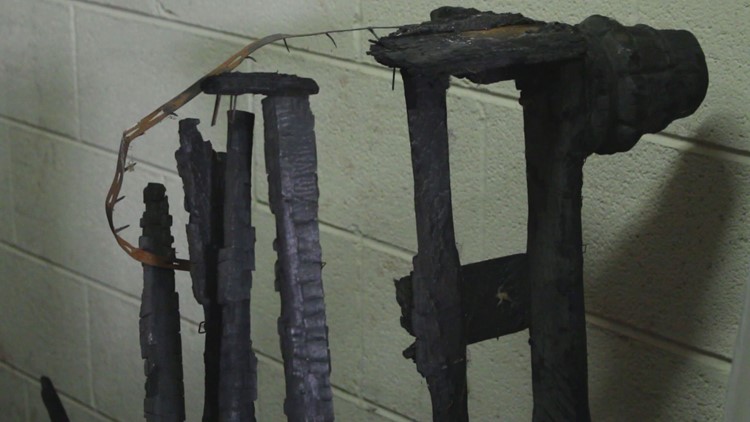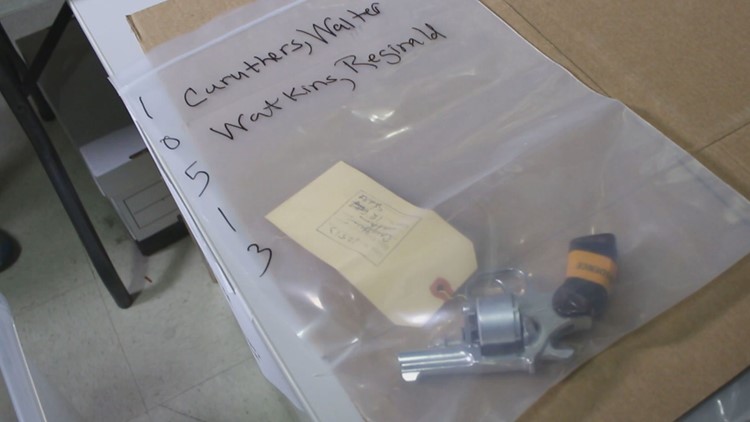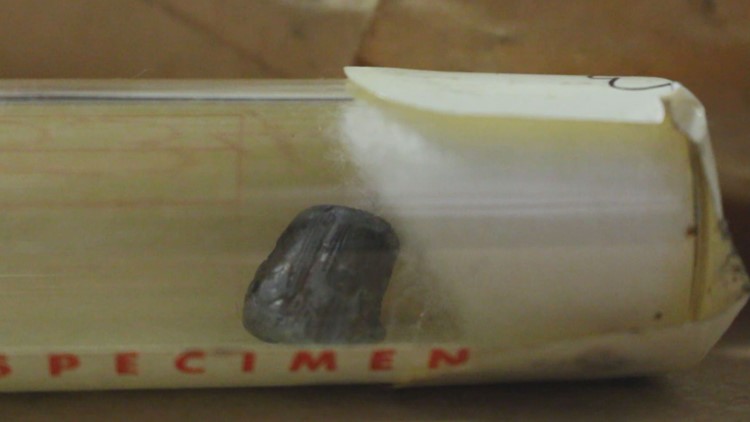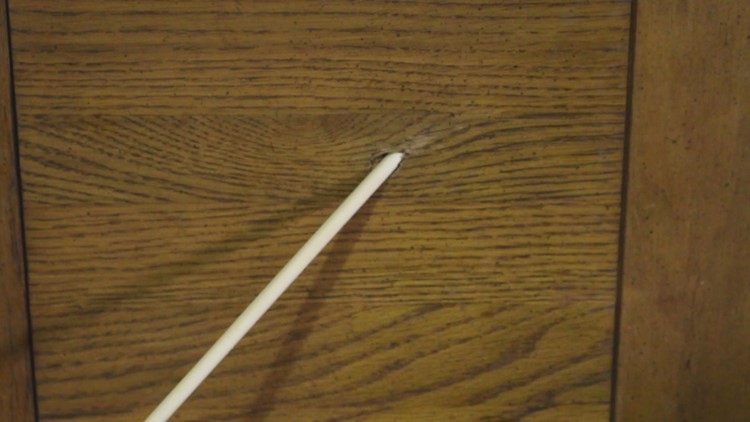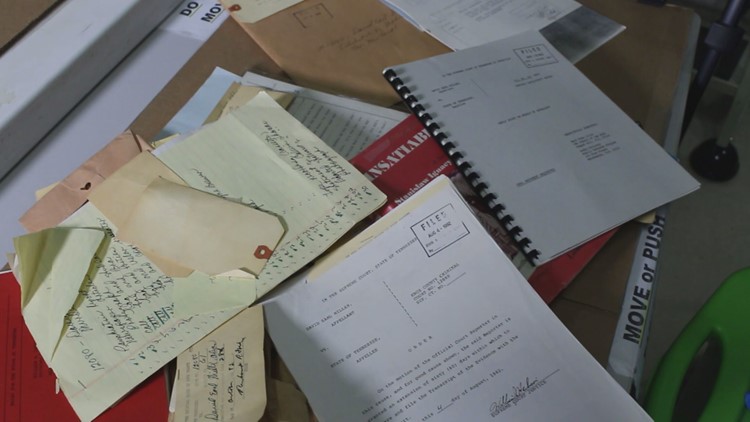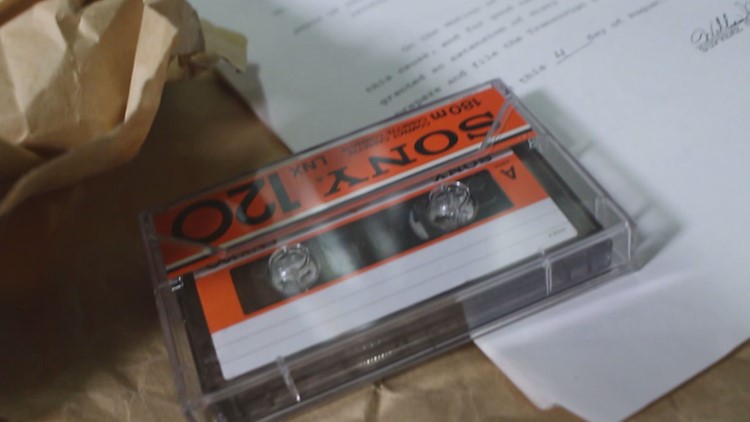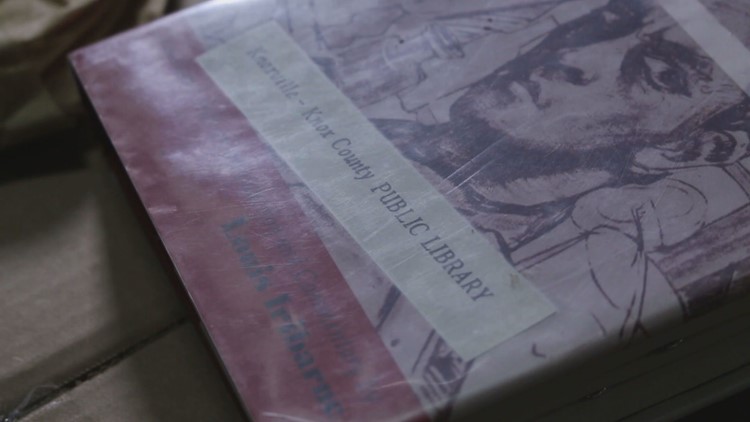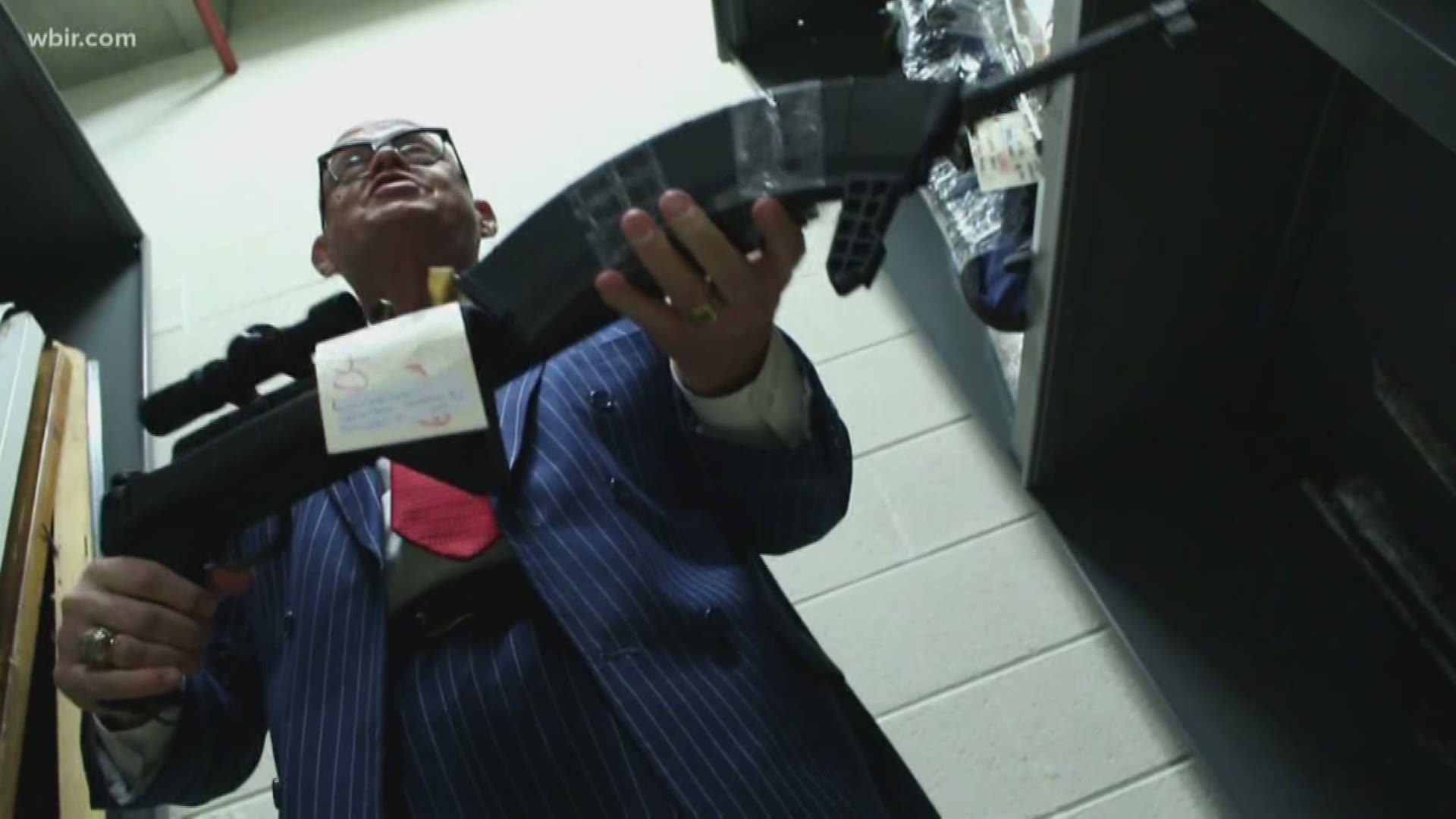KNOXVILLE, Tenn. — Long after the crime, the evidence remains behind.
Whether it's a shotgun, dirty book, crossbow, blood sample, kitchen cabinet, bicycle or fence post, if an object holds significance about a killing, robbery, kidnapping or scam, it's got to be held and preserved for the record.
In Knox County, the Criminal Court clerk is entrusted with that, and he's currently keeping thousands of items from hundreds of trials.
"Most people don't know that it's here, and it is one of the most interesting rooms because of the evidence that is here," said Criminal Court Clerk Mike Hammond, now in the midst of his second term in office.

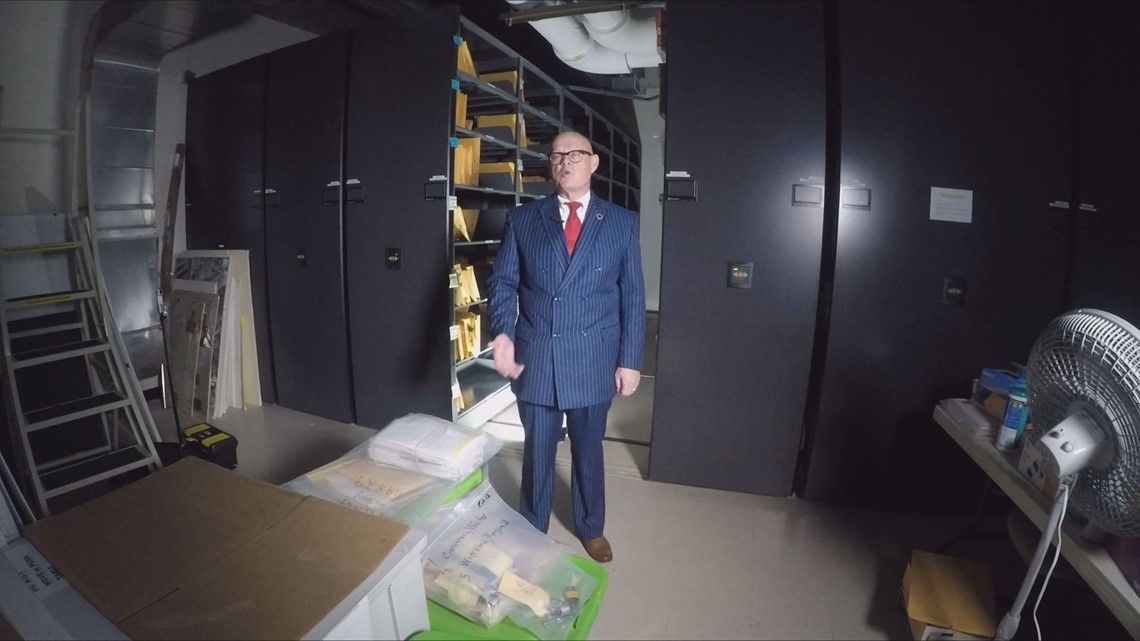
It's all locked away in a windowless vault on a subterranean level of the City County Building downtown.
The public isn't allowed in. Two of Hammond's employees know the combination to get in the room, and two employees must be present at all times whenever there's a need to go into the Peggy Thompson Criminal Evidence Room.
10News got a unique peek into the concrete room this month.
Row after row of shelves line the vault, often organized by weapon type, drug, cash and other valuables. The office stores boxes of Glocks, shotguns, rifles and revolvers.
Photos: Odd evidence in the chamber of crime
Hammond isn't sure how much cash is kept but guesses it's in the thousands of dollars.
Almost everything is bagged or boxed and marked with a number for inventory purposes.
"Anything in this room that was presented as evidence in a trial in the last 40 years is going to be here," Hammond said. "This is why we have over 23,000 items, and we're looking now to get rid of some stuff."
Items from lesser kinds of crimes can eventually be cleared out.
"Anything that has been a capital murder in Knox County -- we will have the evidence. We have to keep that evidence forever."
Numbered, bagged and boxed
Some objects -- a bloody mattress, a box with a skull -- tell an obvious story. Other things aren't so clear. And some are just plain curious.

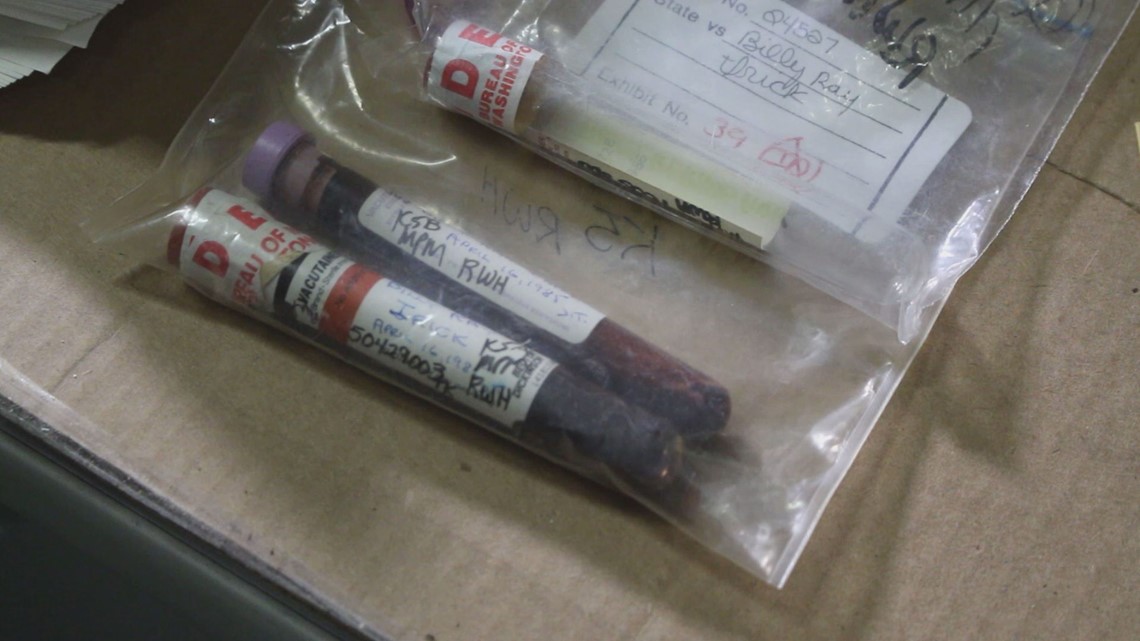
Among the evidence still kept in the City County Building is that introduced in the death penalty cases of Walter Caruthers, Billy Ray Irick, David Miller, Christa Gail Pike and Lemaricus Davidson.
Caruthers along with another man was tried for raping and killing a young hitchhiker they'd picked up in 1980 in Ohio. They tried to kill the young woman's brother but he survived.
The vault still keeps a silver revolver entered at Caruthers' trial. He died in January 2017, still waiting for his execution.
The state of Tennessee finally executed Irick and Miller in 2018 for their 1980s-era crimes. Irick raped and murdered 7-year-old Paula Dyer, a family friend, in a Knoxville home; Miller took a date to a house in South Knoxville where he bludgeoned her and left her body to the elements in the yard.
Photos: Death row evidence in the chamber of crime
Irick was put to death in August, Miller in December.
Little evidence is being held in the Irick case -- blood samples, for example. The same applies for Miller, although what's left includes some pornographic books he'd kept at the time that he murdered Lee Standifer.


Sometimes when a convict's case goes up on appeal, the evidence goes as well for court examination. It may not then return to the clerk's vault in Knoxville.
Several Knox County defendants are still waiting to die including Pike and Davidson.
Pike, with help from two friends, murdered a young Florida woman in 1995 named Colleen Slemmer. They knew each other from working at a Job Corps training center.
For years Slemmer's mother demanded the return of her daughter's skull but it was held for evidence. Pike slammed chunks of asphalt into Slemmer's head to kill her and kept a piece of the skull as a souvenir.
Hammond said that at last Slemmer's skull has been returned to mother May Martinez in Florida.
Other items stored have been in the vault a relatively short time, such as that gathered against Davidson and several co-defendants in the killing of Chris Newsom and Channon Christian in January 2007.
Four people including Davidson have been convicted, and Davidson is now on death row at Riverbend Maximum Security Institution in Nashville.
But he's also seeking a new trial. Evidence from the trial is kept in a back corner of the evidence room, away from obvious sight. It will likely resurface now that Davidson's friend Eric Boyd is facing murder charges of his own in the case.

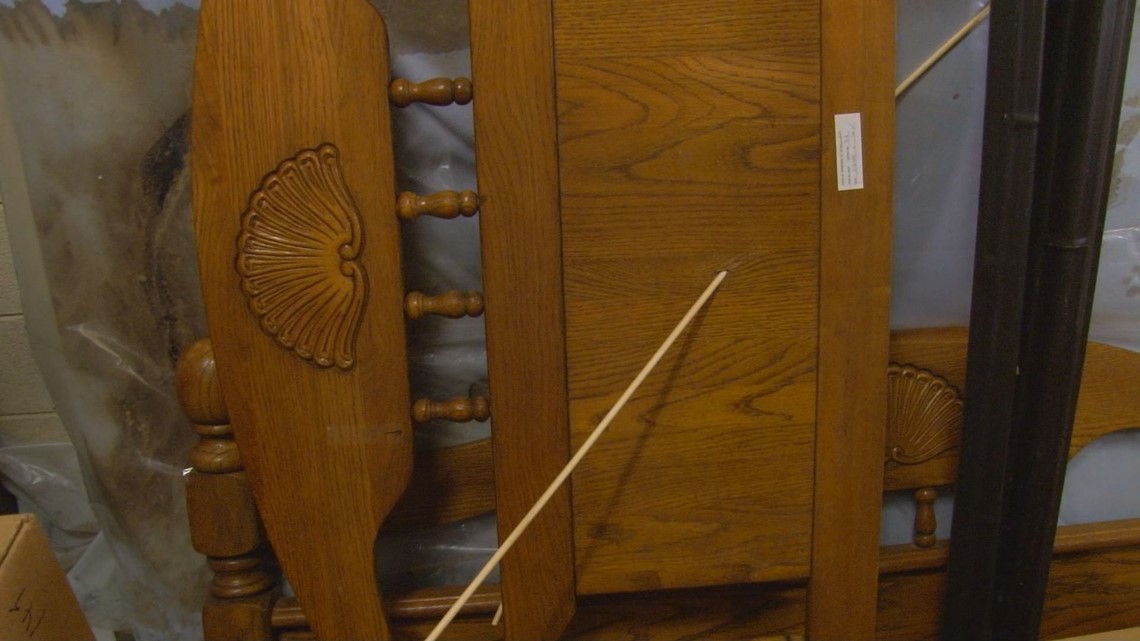
The vault also contains oddities, such as a fence post introduced at the trial of Matthew J. Carter, charged along with two others with killing a woman, Barbara Weimer, as she rode with her family in a van on Interstate 75.
Police said they threw objects including a large rock in 2004 off the Brushy Valley overpass. The rock smashed into the vehicle, killing Weimer, 69.
Then there's what's left from the trial of Thomas D. "Zoo Man" Huskey in the serial killings of four women in 1992.
A jury brought in from Davidson County in 1999 failed to reach a verdict, and the murder charges later were dropped. Huskey, whose father once was the elephant handler at the Knoxville Zoo, remains in prison, serving time on kidnapping and rape charges.
Huskey, who liked to take women for sex to Cahaba Lane in East Knox County, claimed he had a multiple personality disorder and that one of his other personalities might have killed the women. Victims were found in various states of decay in brush off Cahaba Lane.
Additional evidence from past Knox County trials, including some larger items, is stored in another secure room at the City County Building.
Items there include the bloody bed on which David Leath was found shot to death in 2003 at his Solway area farm. His widow said he'd committed suicide with a revolver while firing several shots; prosecutors argued Leath herself killed him.
Stored along with the bed is the headboard and a forensic rod stuck in it that prosecutors used to demonstrate the path of one of the bullets fired from the death weapon.

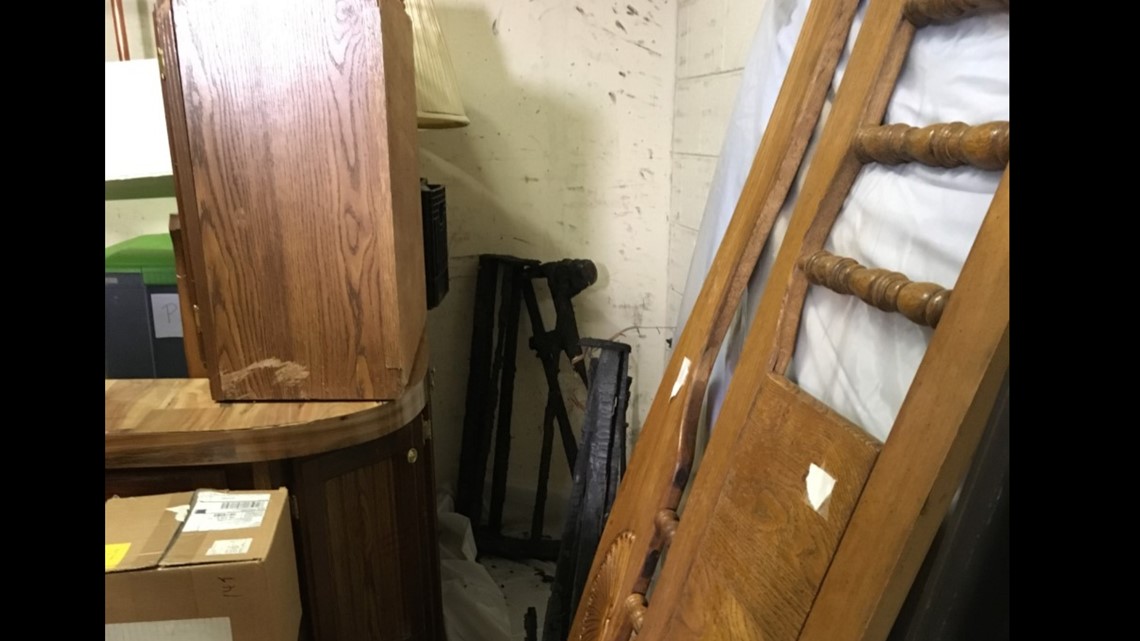
Previously married to Knox County District Attorney General Ed Dossett, who also died under suspicious circumstances in 1992, Leath was ultimately cleared of the crime in 2017 after a protracted prosecution.
Hammond said because no one else formally has been charged with killing Leath, he assumes he'll just keep the evidence in case someone else is charged.
More unusual evidence in the annex -- kitchen cabinets. They were seized and offered at the trial of Jessica Cox, accused of torturing and abusing her two teenage stepsons in 2013.
She'd cuffed them to the kitchen cabinets, which ended up being presented to jurors. They convicted her in 2017 and she's now serving a 24-year sentence at the West Tennessee State Prison in Henning.
Underground archive
Hammond hopes some of the old and now forgotten evidence his office keeps can be moved into an archive or kept off property in storage. He's running out of room.
"We're looking now to talk with our judges and the attorney general to see if there are some things we can take out of the room," he said.

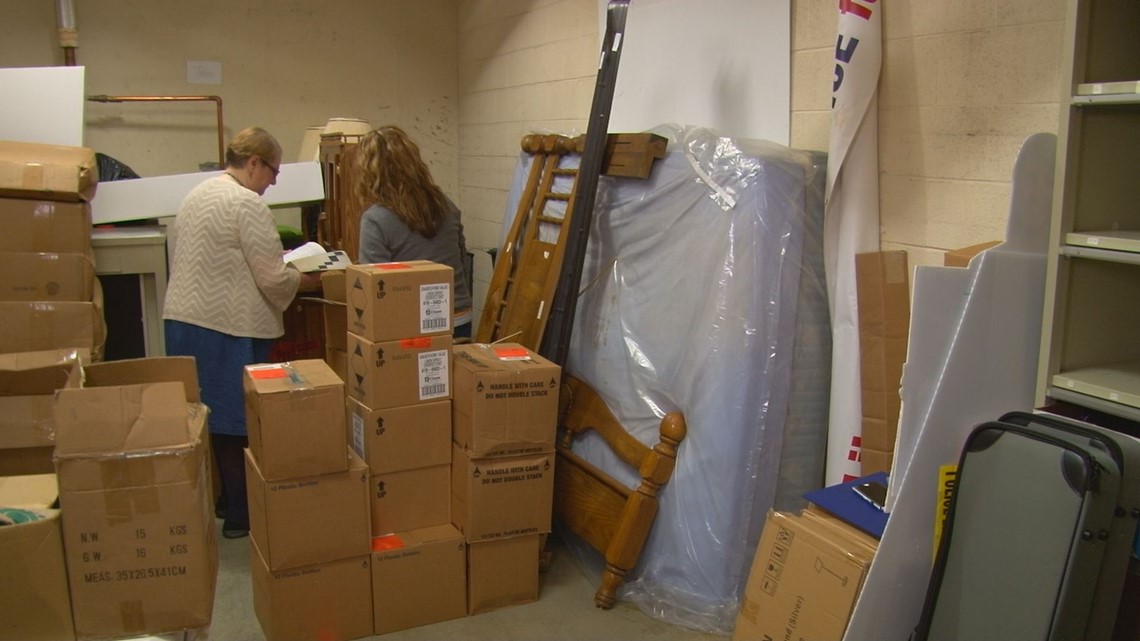
After he was first elected, he sought to re-organize the evidence room and keep better track of all the items. Most everything previously was stored in boxes stacked floor to ceiling.
He said former Knox County Mayor Tim Burchett helped him secure $80,000 to install a more modern organization system. The project took about 18 months.
"We had to take each item individually, we had to catalog it, we had to make sure that it was put in the right types of bins and then computerized," he said.
They named the room after Peggy Thompson, a now retired Criminal Court Clerk's Office employee who formerly kept watch over it.

